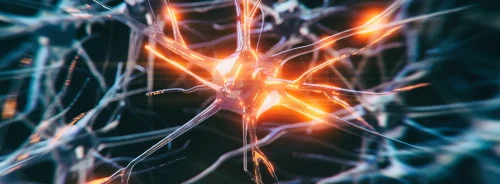Deep Brain Stimulation (DBS) has emerged as a transformative treatment for Parkinson's Disease (PD), particularly effective in alleviating motor symptoms such as tremors, bradykinesia, rigidity, and axial symptoms like postural instability. However, the traditional approach to DBS often involves a trial-and-error method to find the optimal stimulation settings, which can be a lengthy and complex process. Recent research, including a comprehensive study by Rajamani et al., has highlighted the potential for a more refined approach: targeting specific neural networks associated with different symptoms of PD. This article delves into how this symptom-specific approach could revolutionise DBS treatment, making it more personalised and effective.
Symptom-Specific Networks in DBS: A Detailed Breakdown
The study conducted by Rajamani et al. explored the effectiveness of DBS across a diverse cohort of 237 patients from multiple centres. The researchers sought to map improvements in PD's four cardinal motor symptoms—tremor, bradykinesia, rigidity, and axial symptoms—to specific neural networks within the brain. For instance, they found that tremor relief was most strongly associated with stimulation of tracts linked to the primary motor cortex and the cerebellum. This aligns with the known role of these areas in motor control and coordination.
For axial symptoms, which include gait disturbances and postural instability, improvements were linked to stimulation of tracts associated with the supplementary motor cortex and the brainstem. This discovery is particularly significant as axial symptoms often respond variably to traditional DBS, sometimes even worsening under certain conditions. Meanwhile, bradykinesia, characterised by slowness of movement, showed the best response when stimulating tracts connected to the supplementary motor area. In contrast, rigidity responded to stimulation of tracts linked to the premotor cortex. These findings underscore the importance of precise targeting in DBS to achieve the best therapeutic outcomes.
The Development and Implementation of the Cleartune Algorithm
Building on these insights, the researchers developed an innovative algorithm named "Cleartune." This tool is designed to optimise DBS programming by focusing on the symptom-response tracts identified in their study. Cleartune operates by analysing the patient's dominant symptoms and then recommending the optimal DBS settings that are most likely to stimulate the relevant neural pathways. This represents a significant departure from the standard method of DBS programming, which often involves adjusting settings based on broad metrics or overall patient feedback without specific attention to the underlying neural networks involved.
Cleartune's approach is akin to creating a "map" of symptom-specific pathways in the brain and then using this map to guide the placement and settings of DBS electrodes. For example, if a patient primarily suffers from tremors, Cleartune would prioritise settings that target the cerebellothalamocortical pathway. The algorithm tests various configurations, simulating their effects based on the symptom-response tracts, and selects the setting predicted to offer the most significant symptom relief. This not only enhances the precision of the treatment but also streamlines the process of finding the optimal settings, potentially reducing the time and complexity involved.
Validation, Challenges, and Prospects of Cleartune
The study validated Cleartune's effectiveness using additional patient cohorts, confirming that the algorithm could reliably predict improvements in motor symptoms. This validation involved comparing the clinical outcomes of patients whose DBS settings were adjusted using Cleartune versus traditional programming methods. In most cases, Cleartune settings resulted in superior symptom control, demonstrating the algorithm's potential to enhance the efficacy of DBS.
However, the study also highlighted some challenges. One significant limitation is that while Cleartune can optimise symptom relief, it does not currently account for potential side effects of DBS, such as dyskinesia or speech disturbances. These side effects can vary depending on the precise location and settings of the stimulation. Future iterations of the algorithm may need to incorporate additional data to predict and mitigate these adverse effects, potentially by identifying "tracts of avoidance" that should not be stimulated.
Moreover, the research pointed out that while the identified symptom-specific tracts are close to one another, the precise placement of electrodes remains critical. Misalignment by even a few millimetres can affect which tracts are stimulated, potentially impacting the effectiveness of the treatment. Developing more sophisticated imaging and navigation technologies will be crucial in addressing this issue, ensuring that electrode placement can be as precise as possible.
The symptom-specific approach to DBS, as exemplified by the Cleartune algorithm, represents a promising advancement in treating Parkinson's Disease. By focusing on the specific neural networks involved in different symptoms, this method offers a more personalised and effective treatment option for patients. While there are still challenges to be addressed, particularly concerning the management of side effects and the precision of electrode placement, the research provides a strong foundation for future innovations in DBS. As the technology and our understanding of neural networks continue to evolve, personalised DBS has the potential to significantly improve the quality of life for individuals with Parkinson's Disease, offering them greater control over their symptoms and daily lives.
Source Credit: NATURE Communications
Image Credit: iStock






